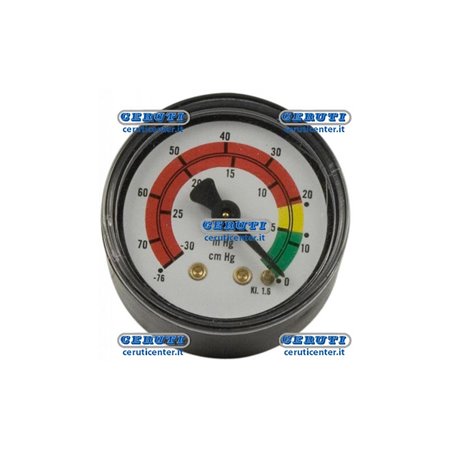
Vacuum gauges, also known as “vacúmetros,” are essential instruments used to measure pressure levels below atmospheric pressure. They play a vital role in industries such as automotive, chemical, and research laboratories, where precise pressure readings are crucial. In this article, we’ll explore the working principles, different types, benefits, and applications of vacúmetros, offering insights into how they enhance performance and safety in various sectors.
How Does a Vacúmetro Work?
Vacúmetros function by detecting the pressure difference between a vacuum system and atmospheric pressure. Depending on the type, they use different mechanisms—some rely on mechanical movements, while others utilize electrical signals. The main goal is to provide accurate and reliable pressure readings, ensuring that systems operate within desired parameters.
Why Is Accurate Pressure Measurement Important?
Precise measurement using a vacúmetro is essential in processes where pressure influences efficiency, product quality, or safety. Incorrect readings can lead to malfunctions, product defects, or safety hazards, especially in high-stakes industries like pharmaceuticals or automotive diagnostics.
Types of Vacúmetros: Understanding the Options
Choosing the right vacúmetro depends on the application, pressure range, and level of accuracy required. Below are the most common types:
1. Bourdon Tube Vacuum Gauges
These gauges use a coiled metal tube that straightens as the pressure inside decreases, moving a needle to indicate the pressure level.
- Use Case: Automotive applications and HVAC systems.
- Advantages: Simple and robust, ideal for measuring low to medium vacuum levels.
2. Pirani Vacuum Gauges
Pirani vacúmetros work by measuring the thermal conductivity of gases at low pressures. The change in gas conductivity reflects the vacuum level.
- Use Case: Semiconductor manufacturing and laboratory equipment.
- Advantages: High sensitivity, suitable for low-pressure environments.
3. Digital Vacuum Gauges
Digital vacúmetros display readings on a screen and often provide more precision than analog alternatives. They may include additional features such as data logging.
- Use Case: Research labs and precision manufacturing.
- Advantages: High accuracy, easy to read, and often portable.
4. McLeod Vacuum Gauges
These gauges measure very low pressures by compressing gas into a known volume and using the height of the compressed gas column to calculate pressure.
- Use Case: Ultra-high vacuum environments.
- Advantages: Extremely precise but not suitable for dynamic measurements.
Applications of Vacúmetros Across Industries
1. Automotive Diagnostics and Repair
In automotive workshops, vacúmetros are used to diagnose engine issues by measuring the manifold pressure. Proper vacuum readings indicate that an engine is functioning efficiently, while deviations may point to leaks or faulty components.
2. Chemical and Pharmaceutical Industries
Vacuum processes are essential in chemical reactions and pharmaceutical production. Vacúmetros ensure that pressure levels remain optimal to prevent contamination or product loss.
3. HVAC Systems
HVAC technicians use vacúmetros to monitor and maintain air conditioning and refrigeration systems. Ensuring the correct vacuum level helps prevent moisture from entering the system, which can cause corrosion and reduce efficiency.
4. Food Packaging Industry
Many food products are vacuum-sealed to increase shelf life. Vacúmetros help maintain the right vacuum levels during packaging, ensuring product safety and freshness.
Key Benefits of Using Vacúmetros
1. Improved Process Control
By monitoring pressure in real-time, vacúmetros allow for timely adjustments, ensuring optimal system performance and efficiency.
2. Safety Assurance
In environments where pressure control is critical, vacúmetros help prevent dangerous situations, such as explosions or system failures.
3. Cost Savings
Accurate pressure monitoring can reduce operational costs by minimizing energy waste and preventing equipment damage.
How to Choose the Right Vacúmetro for Your Needs
When selecting a vacúmetro, consider the following factors:
1. Pressure Range
Different gauges are designed for specific pressure ranges. A gauge used in automotive diagnostics may not be suitable for ultra-high vacuum applications.
2. Accuracy and Sensitivity
Some applications require high-precision readings. In such cases, digital or McLeod gauges are preferable.
3. Environmental Conditions
Consider the operating environment. For example, if the gauge will be exposed to harsh chemicals or extreme temperatures, ensure it’s durable enough to withstand such conditions.
4. Portability and Ease of Use
For fieldwork, a portable digital vacúmetro is ideal due to its ease of use and compact size.
How to Maintain and Calibrate Vacúmetros
1. Regular Calibration
Calibration ensures the gauge provides accurate readings. It’s recommended to calibrate vacúmetros regularly, especially in critical applications.
2. Cleaning and Maintenance
Keeping the gauge clean prevents dust or debris from affecting the readings. Avoid exposing the vacúmetro to conditions it isn’t designed for.
3. Storing Properly
When not in use, store the gauge in a protective case to prevent physical damage. Digital gauges should be stored with batteries removed to avoid leakage.
Common Issues and Troubleshooting Tips for Vacúmetros
1. Inconsistent Readings
- Cause: Calibration issues or environmental interference.
- Solution: Recalibrate the vacúmetro and ensure it’s used in a stable environment.
2. Gauge Needle Stuck or Not Moving
- Cause: Mechanical failure or dirt inside the gauge.
- Solution: Clean the gauge or consider professional repair.
3. Digital Gauge Not Turning On
- Cause: Dead battery or internal circuit issue.
- Solution: Replace the battery or consult the manufacturer if the problem persists.
Conclusion
Vacúmetros are indispensable tools for measuring vacuum levels in various industries. From automotive diagnostics to pharmaceutical manufacturing, these instruments play a crucial role in ensuring efficiency, safety, and product quality. Understanding the different types of vacúmetros, their applications, and how to maintain them can help users choose the right gauge for their needs and prolong its lifespan.
FAQs
1. What is the primary purpose of a vacúmetro?
A vacúmetro measures pressure levels below atmospheric pressure, ensuring systems operate efficiently and safely.
2. How often should I calibrate my vacúmetro?
Calibration frequency depends on usage, but it’s generally recommended to calibrate at least once a year or before critical applications.
3. Can I use the same vacúmetro for different applications?
While some vacúmetros are versatile, it’s important to choose one suited to the specific pressure range and environment of the application.
4. What’s the difference between a digital and analog vacúmetro?
Digital vacúmetros offer more precision and additional features like data logging, while analog ones are simpler and more durable for basic use.
5. Why is vacuum measurement important in HVAC systems?
Vacúmetros help maintain the right vacuum levels in HVAC systems, preventing moisture from entering and ensuring efficient operation.







